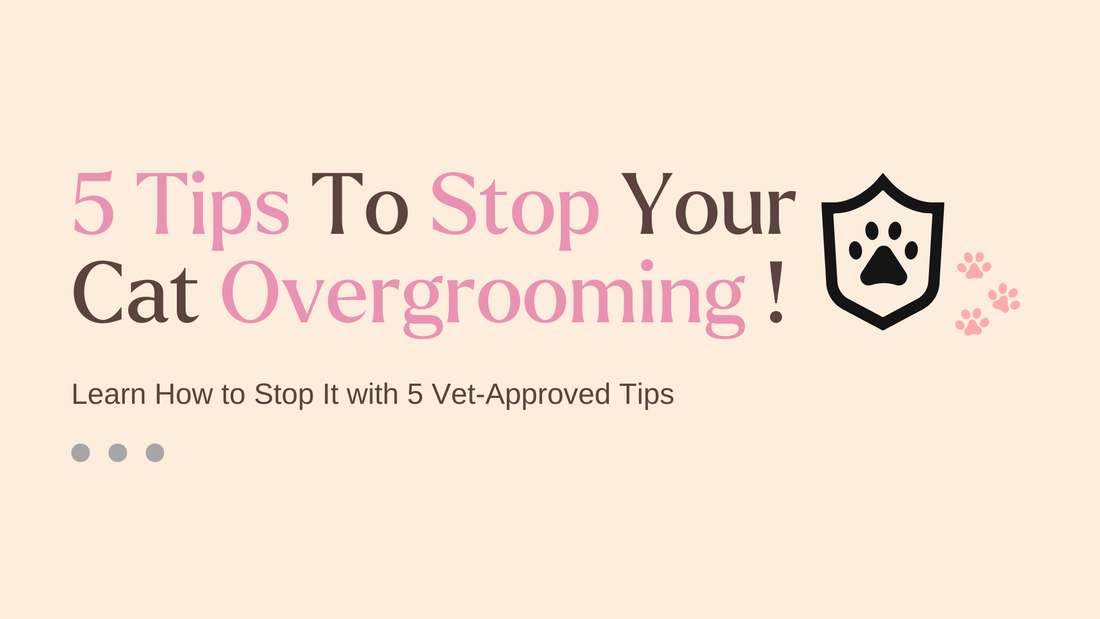
5 Tips To Stop Your Cat Overgrooming
As a competent cat owner, when you notice your cat licking or grooming itself frequently, it could be a sign of stress or an underlying health issue. Understanding the causes of overgrooming and taking the right steps can help your cat return to a healthier, happier state.
What Is Overgrooming?
Overgrooming occurs when a cat excessively licks, chews, or scratches their fur or skin. This can lead to:
-Bald spots
-Redness or irritation
-Infections or sores
While grooming is a natural behavior, obsessive grooming may point to underlying issues.
Causes of Overgrooming
1.Stress or Anxiety:
Changes in the home environment, such as moving, new pets, or a lack of stimulation, can trigger stress-induced overgrooming.
Cats may use grooming as a coping mechanism to soothe themselves.
2.Allergies:
Allergies to food, fleas, or environmental factors like pollen can cause skin irritation, prompting excessive licking.
3. Skin Conditions:
Parasites, fungal infections, or dermatitis can lead to discomfort, making cats groom excessively.
4.Pain or Discomfort:
Pain from arthritis, injuries, or other internal conditions may lead to grooming specific areas repeatedly.
5.Boredom:
In environments with limited stimulation, cats may resort to overgrooming as a way to pass time.
How to Identify Overgrooming?
-Frequent Licking: Watch for areas where your cat grooms obsessively.
-Bald Patches: Look for thinning fur or hairless spots.
-Visible Skin Issues: Redness, swelling, or sores could indicate irritation.
-Behavioral Changes: Cats may become more withdrawn or irritable.
Steps to Address Overgrooming
1.Visit the Vet: Rule out medical causes like skin conditions, allergies, or pain. Your vet can perform tests to diagnose and treat underlying health problems.
2.Reduce Stress: Provide a stable, enriching environment with plenty of playtime and interaction. Use pheromone diffusers to create a calming atmosphere.
3.Environmental Enrichment: Introduce new toys, climbing trees, or scratching posts to keep your cat engaged. Ensure they have safe, quiet spaces to relax.
4.Check for Allergies: Use flea prevention treatments and consider dietary changes if food allergies are suspected.
5. Maintain a Routine: Cats thrive on consistency. Stick to regular feeding, play, and sleep schedules.
When to Seek Professional Help
If overgrooming persists despite your efforts, consult a veterinarian or feline behaviorist. Persistent overgrooming may require specialized care or medication to address severe anxiety or skin issues.
Overgrooming can be distressing for both you and your cat, but understanding the underlying causes is the first step toward resolution. By addressing stressors, enriching their environment, and seeking veterinary guidance, you can help your feline friend return to their healthy, happy self.
Is your cat overgrooming? Subscribe to our newsletter for expert advice on feline health, behavior tips, and practical solutions to help your cat live a happy, stress-free life!
Content: Sophie
Design: Yusa
References:
- https://www.vet.cornell.edu/departments-centers-and-institutes/cornell-feline-health-center/health-information/feline-health-topics/cats-lick-too-much
- https://vetfocus.royalcanin.com/en/scientific/overgrooming-in-cats
- https://www.vetwest.com.au/pet-library/overgrooming-how-to-know-when-your-cat-is-overgrooming/
